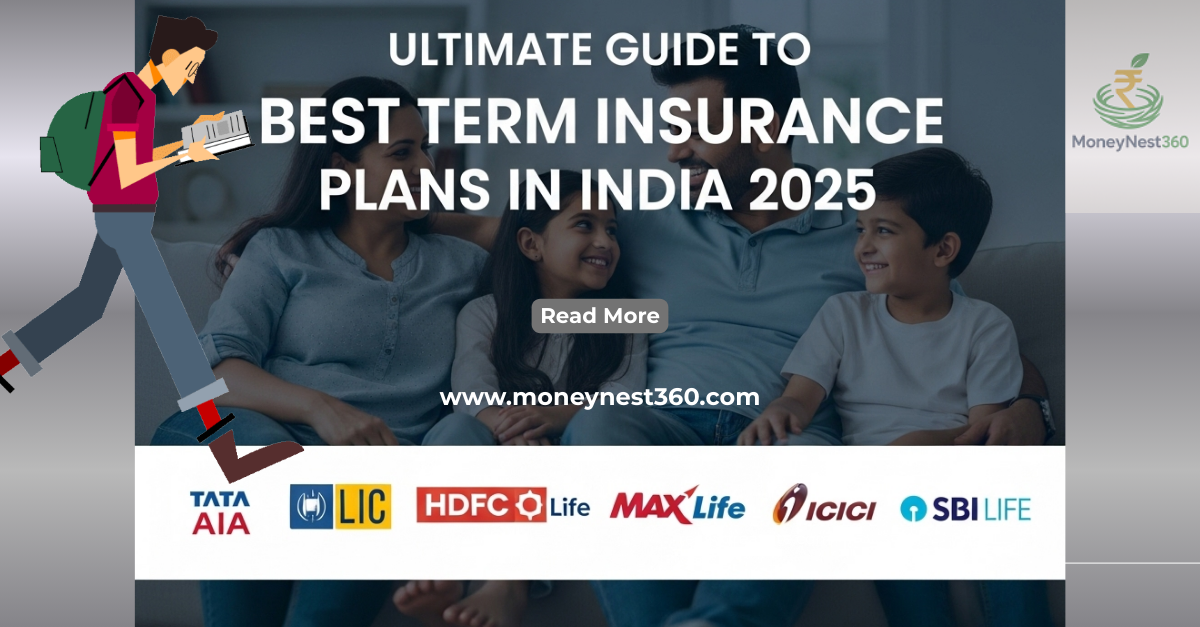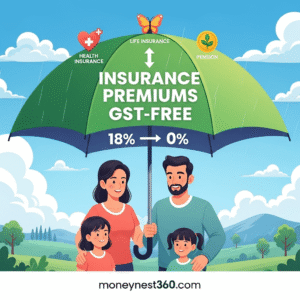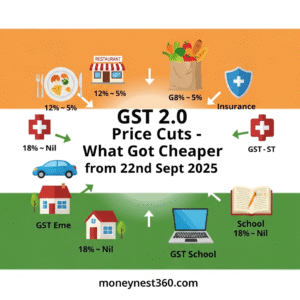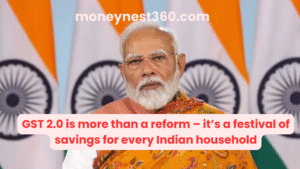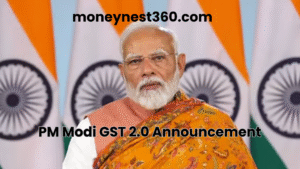Right to Choose Best Term Insurance
Life is full of uncertainties. Imagine – if something unexpected happens to you tomorrow, will your family be financially secure? That’s exactly where a term insurance plan comes in.

A term plan gives your family a big financial cover (₹50 lakh, ₹1 crore or more) at a very low cost. Since it’s a pure protection plan, you don’t get maturity benefits, but your loved ones get financial security if you are not around.
But here’s the problem, with so many insurance companies in India – LIC, HDFC Life, ICICI Prudential, TATA AIA, Max Life and SBI Life choosing the right one can be confusing.
Don’t worry. In this guide, I’ll break it down step by step with easy examples.
Also Read: Right Age to Buy a Best Term Insurance Plan in India?
Key Factors to Check Before Buying a Term Plan
1. Claim Settlement Ratio (CSR)
This shows how many claims the insurer has settled compared to total claims received.
CSR = (Number of claims the insurance company has approved & paid during a particular financial year) ÷ (Total number of claims received) × 100
Example : If an insurer gets 10,000 death claims in a year and settles (pays) 9,850 of them, the CSR for that year is 98.5%.
👉 Always pick insurers with CSR above 97%.
Latest CSRs for Key Indian Life Insurance Companies
Here are the most recent Claim Settlement Ratios (CSRs) for the insurers you asked about. These are for individual death claims (where available) and are based on public disclosures / IRDAI reports for FY2023-24 or FY2024-25 (depending on availability).
| Insurance Company | CSR (2023-24) | CSR (2024-25) | Remarks |
| LIC | 98.15% | No Source | Source: LIC |
| TATA AIA | 99.13% | 99.41% | Source: TATA AIA |
| HDFC Life | 99.50% | 99.6% | Source: HDFC Life |
| ICICI Prudential | 99.17% | 99.3% | Source: ICICI Prudential |
| MAX Life | 99.65% | 99.7% | Source : Policy Baazar |
| SBI Life | 99.20% | No Source | Source: Policy Baazar |
IRDAI & Expert Tip: Always choose CSR above 97% for safety.
2. Solvency Ratio
When you buy a life insurance plan, it’s natural to ask:
“Will the insurance company be able to pay my family if something happens to me?”
This is where Solvency Ratio becomes important.
Solvency Ratio measures an insurance company’s financial health – basically, how much money it has set aside compared to what it needs to pay all future claims.
Formula:
Solvency Ratio = (Available Capital) ÷ (Required Capital by IRDAI)
IRDAI Minimum: 1.5 (or 150%) — meaning the company must have 50% more capital than the regulatory minimum to stay safe.
Example:
- Suppose a company needs ₹1000 crore as per IRDAI rules.
- If it has ₹2000 crore actually available, its solvency ratio = 2.0 (or 200%).
- Higher number = more safety for policyholders.
Tip : Look for insurers with solvency ratio above 1.8–2.0 for extra safety.
| Insurance Company | SR(FY: 2024-25) | What It Means For You |
| LIC | 2.11% | Very strong buffer, safe public-sector insurer |
| TATA AIA | 1.90% | Reliable private insurer, consistent performance |
| HDFC Life | 1.94% | Strong private insurer, consistent financial health |
| Max Life | 2.06% | High capital, one of the strongest private insurers. |
| ICICI Prudential | 1.89% | Good buffer, slightly lower than top private peers. |
| SBI Life | 1.96% | Comfortable and stable, PSU-backed trust. |
3.Premium Affordability – How to Choose the Right Term Plan Without Overspending
When buying a term insurance plan, one of the first things to check is “How much will I have to pay every year?”
Even for the same cover and term, premiums can vary significantly from one company to another. That’s because each insurer uses its own pricing, risk assessment, and underwriting rules.
Comparison of Top 6 Term Insurance Plans in India (2025 Example)
| Company & Plan | Apx Premium(Yearly) | CSR(rounded) | SR(rounded) |
| LIC Tech Term | 15000 INR | 98.5% | 2.1% |
| HDFC Life Click2Protect Super | 11000 INR | 99% | 1.9% |
| ICICI Pru iProtect Smart | 11500 INR | 99% | 1.9% |
| TATA AIA Sampoorna Raksha | 10800 INR | 99% | 1.9% |
| Max Life Smart Secure Plus | 10500 INR | 99% | 2.1% |
| SBI Life eShield Next | 12000 | 99% | 1.9% |
Note: Approx. premiums for a 30-year-old, non-smoker, ₹1 crore cover for 30 years
Real-Life Example:
👉 Case: Ramesh, Age 30, earning ₹10 lakh/year
- Needs cover of at least ₹1 crore (10x annual income).
- Wants coverage till age 60 (30 years).
- Shortlisted 3 companies: LIC, Max Life, TATA AIA.
- LIC premium is highest (₹15,000), but strong brand trust.
- Max Life offers lowest premium (~₹10,500) + high CSR.
- TATA AIA offers coverage till 100 years (future-proof).
Ramesh’s Decision: Chooses TATA AIA Sampoorna Raksha Supreme or Max Life Smart Plus for balance of affordability, high CSR, and lifetime cover.
Expert Tip: Don’t just pick the cheapest plan — balance premium + CSR + trust + solvency.
Also Read: Top 10 Term Insurance Plans in India 2025 -Smart Wealth & Protection in One
4.Riders — Extra Protection for Your Family
Think of riders as toppings on a pizza 🍕 – they cost a little extra but can make a big difference when it matters most.
Riders are optional add-ons to your base term insurance plan. They give your family extra financial security in specific situations.
Popular Riders in India
| Rider | What It Does | Example |
| Accidental Death Benefit | Pays extra sum if death occurs due to accident. | Lucy buys ₹1 crore term cover + ₹50 lakh accidental rider. If she dies in an accident, family gets ₹1.5 crore instead of ₹1 crore. |
| Critical Illness Cover | Pays lump sum on diagnosis of serious illnesses (like cancer, heart attack, kidney failure). | Manu adds ₹25 lakh critical illness rider. If diagnosed with cancer, he receives ₹25 lakh to cover treatment costs. |
| Waiver of Premium | Stops premium payments if you become permanently disabled | Sonu is disabled in an accident. Insurance company pays remaining premiums, ensuring cover continues without financial stress |
| Income Option / Monthly Payout | Instead of lump sum, family gets monthly income for a set period | Lipcy chooses monthly payout of ₹50,000 for 20 years. Family gets regular income instead of one-time payment |
Expert Tip:
- Don’t skip riders just to save a few thousand rupees/year.
- A small extra premium today can save lakhs tomorrow if something unexpected happens.
5.Policy Flexibility – Tailor Your Term Plan to Your Needs
Not all term plans are the same – some let you customize the coverage based on your lifestyle, family, and financial goals. This is called policy flexibility.
Think of it as designing your own plan so it fits your life, not the other way around.
Key Flexible Options in India
| Option | What It Does | Example |
| Increasing Cover Option | Your insurance cover grows over time (usually with inflation or salary increase) | Randy takes ₹1 crore cover at age 30 with 5% yearly increase. By age 40, cover becomes ₹1.63 crore, keeping up with rising costs. |
| Joint Life Option | Covers both husband and wife under one policy. | Randy & Sandy buy a ₹1.5 crore joint term plan. If either spouse passes away, the family gets full payout, simpler than two separate policies. |
| Choice of Payout | Decide how your family receives the money: lump sum, monthly income, or combination. | Sandy chooses ₹1 crore term plan with 50% lump sum and 50% monthly payout of ₹50,000 for 10 years. Family gets both immediate funds + steady income. |
Expert Tip:
- Check if the term plan allows future cover increase without medical tests — keeps policy convenient.
- Choose payout style based on family needs: lump sum for debts, monthly for daily expenses, combo for both.

Step-by-Step Guide to Select the Best Term Insurance
- Decide your coverage amount (usually 10–15 times your annual income).
- Choose the policy term (till age 60–65).
- Compare claim settlement ratios & solvency.
- Compare premiums across top 4–5 companies.
- Add riders that suit your needs.
- Check flexibility of payout (lump sum or monthly).
- Buy online for lower premiums and easy servicing.
Final Thoughts
A pure term plan is not about returns – it’s about protecting your family’s financial future.
- If you want trust and brand value → LIC or SBI Life.
- If you want affordable premium + features → Max Life or TATA AIA.
- If you want flexibility & riders → ICICI Prudential or HDFC Life.
👉 The best strategy is to shortlist 3–4 insurers, compare premiums, riders, and claim ratios, then pick the one that balances cost with reliability.
Remember: the earlier you buy, the lower your premium will be
Frequently Asked Questions(FAQs)
1. What is a pure term insurance plan?
A pure term insurance plan is a life insurance policy that provides financial protection to your family in case of your death during the policy term. It has no maturity benefits, making it cheaper than traditional life insurance.
2. How do I choose the best term insurance plan in India?
Check three key factors:
- Claim Settlement Ratio (CSR) > 97%
- Solvency Ratio > 1.8x
- Affordable premium for your desired cover
Also consider riders and flexibility options to meet family needs.
3. Can I increase my cover later?
Yes. Many plans offer increasing cover option, allowing your sum assured to grow with age or inflation without requiring fresh medical tests.
4. Should I choose a joint life term plan?
If you’re married, a joint life plan covers both husband and wife under one policy. The payout happens on the death of either spouse, simplifying coverage.
5. Lump sum vs monthly payout — which is better?
- Lump sum: ideal for repaying debts, buying assets, or emergencies.
- Monthly payout: ensures steady income for family’s daily expenses.
- Combo option: provides both immediate funds and long-term income
6. At what age should I buy term insurance?
Earlier the better! Buying in your 20s or early 30s means lower premiums and longer coverage, ensuring your family is financially secure at minimal cost.
7. How is Term Insurance Different from Other Life Insurance Plans?
Term insurance is like a safety net for your family. Unlike other life insurance plans that also give you money back when you survive the term, term insurance only pays a lump sum to your family if something happens to you during the coverage period. It’s cheaper and focuses purely on protecting your loved ones financially.
8. Does Term Insurance Cover Accidental Deaths?
Yes, standard term insurance plans cover death due to both natural and accidental causes. Additionally, insurers offer riders like the Accidental Death Benefit Rider for enhanced coverage.
9. How Much Cover Do You Need?
Get 10–15× your yearly income, and don’t forget your family’s expenses, loans, and future goals!
10. Does Smoking Affect My Term Insurance Premium?
Yes, smokers are considered higher risk, leading to higher premiums. It’s advisable to quit smoking before purchasing a policy to avail lower premiums and improve your health
11. Can NRIs Buy Term Insurance in India?
Yes! NRIs can buy term insurance in India. You just need to meet the insurer’s requirements, like providing documents and completing any medical tests.
12. What Are the Tax Benefits of Term Insurance?
When you pay premiums for term insurance, you can claim tax deductions of up to ₹1.5 lakh a year under Section 80C. Plus, if something happens to you, the money your family gets is completely tax-free under Section 10(10D).
